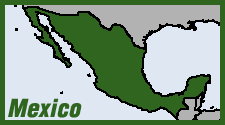 The Zapatista rebels in Mexico's southern state of Chiapas marked the anniversary of their 1994 New Years Day uprising by hosting a national activist gathering in their territory. Guests of honor at the proceedings in the small pueblo of Oventic were a group of parents and other family members of the 43 students who disappeared in September 2014. The students, from Ayotzinapa in Guerrero state, are said to have been abducted by corrupt local police and turned over to a murderous narco-gang—but surviving kin and their supporters increasingly charge Mexico's government with a cover-up in the case. The Zapatistas' Subcommander Moises, joined by 43 masked rebels (one for each missing student), oversaw the ceremony and each embraced the family members. Moises expressed his own skepticism of the official investigation: "The Zapatistas believe that we cannot trust the bad governments anymore, they are the servants of capital, stewards of big capitalist business," he said. "The one calling the shots is global capitalism, that is why we cannot believe them." (TeleSur, Jan. 1)
The Zapatista rebels in Mexico's southern state of Chiapas marked the anniversary of their 1994 New Years Day uprising by hosting a national activist gathering in their territory. Guests of honor at the proceedings in the small pueblo of Oventic were a group of parents and other family members of the 43 students who disappeared in September 2014. The students, from Ayotzinapa in Guerrero state, are said to have been abducted by corrupt local police and turned over to a murderous narco-gang—but surviving kin and their supporters increasingly charge Mexico's government with a cover-up in the case. The Zapatistas' Subcommander Moises, joined by 43 masked rebels (one for each missing student), oversaw the ceremony and each embraced the family members. Moises expressed his own skepticism of the official investigation: "The Zapatistas believe that we cannot trust the bad governments anymore, they are the servants of capital, stewards of big capitalist business," he said. "The one calling the shots is global capitalism, that is why we cannot believe them." (TeleSur, Jan. 1)
Ayotzinapa students and their supporters continue to protest for justice in the case. On Nov. 12, students blocked a main highway through Guerrero at the town of Tixtla, and clashed with state and federal police who tried to clear the road. Students reported that some 20 protesters were "disappeared"—in this case, seeming to mean detained by police without charge or formal paperwork. (DesInformémonos, Nov. 12)
Mexico's National Human Rights Commission (CNDH) had three days earlier harshly criticized the federal Prosecutor General's Office (PGR) and other agencies involved in the investigation of the "Missing 43" for failing to comply with its recommendations. The CNDH had issued 26 observations and recommendations to the PGR in July, finding flaws in the investigation right down to basic forensic work. (Jurist, Nov. 9)
Narco-violence continues bloody toll
The relentless violence of Mexico's ongoing narco-wars continues to eat at the fabric of society. On Jan. 2, gunmen burst into the home of Gisela Mota, newly elected mayor of Temixco, in Morelos state, and shot her dead—less than 24 hours after she took the oath of office. Mota, 33, a former member of Mexico's congress with the left-wing Party of Democratic Revolution (PRD), was an outspoken critic of narco-corruption. (AFP, Jan. 2)
On Dec. 28, the body of Carlos Rosales Mendoza AKA "El Tísico" —founder and former leader of La Familia Michoacana narco-gang—was one of four discovered at a toll booth on a highway through Michoacán state. His cadaver showed signs of severe torture. (Mexico News Daily, Dec. 28)
At least 10 people were killed in a shoot-out at a cock-fighting event in the pueblo of Cuajinicuilapa, Guerrero, Nov. 9, with a 12-year-old boy among the dead. Some reports said the clash began as an argument between rival groups at the fight, but others that gunmen stormed the venue. Local communities are riven with fueds between warring narco-gangs. (BBC News, Nov. 9)
The government has claimed some recent victories. On Oct. 28, the PGR announced the arrest in Chihuahua state of Ana Marie Hernández AKA "La Muñeca" or "The Doll," a fugitive one-time operative for the Juárez Cartel known for her luxurious lifestyle and sexy image. She is also the ex-wife of a US Border Patrol agent, who is now serving time in a US federal prison. (My San Antonio, Oct. 28) Earlier that month, military forces in Tamaulipas state announced the arrest in Matamoros of Ángel Eduardo Prado Rodríguez AKA "El Ciclón 7" ("Cyclone 7") or "El Orejón" ("Big Ears"), a fugitive leader of the Gulf Cartel. (La Jornada, Oct. 16) But both the Juárez and Gulf cartels are basically dead, having been driven from their turf by, respectively, the Sinaloa Cartel and Los Zetas—the two monsters that dominate the Mexican drug trade today.
And while Mexico's capital has until recently been a refuge from the narco-violence, this is now changing. On Oct. 26, the body of a man wrapped from ankles to neck in white bandages was found hanging from a bridge in Mexico City's Acatitla neighborhood, two bullets in his head. A "narco-message" with a warning was found below the bridge, although officials did not reveal what it said. Hanging bodies from bridges and highway overpasses has been a sgnature of territorial disputes between narco-gangs elsewhere in Mexico, but this marked the first time it's been seen in Mexico City. (AP, Oct. 28)
Cross-post to High Times







Recent comments
2 weeks 2 days ago
6 weeks 12 hours ago
10 weeks 17 hours ago
10 weeks 6 days ago
20 weeks 6 days ago
24 weeks 6 days ago
25 weeks 6 days ago
26 weeks 1 hour ago
47 weeks 13 hours ago
51 weeks 1 day ago